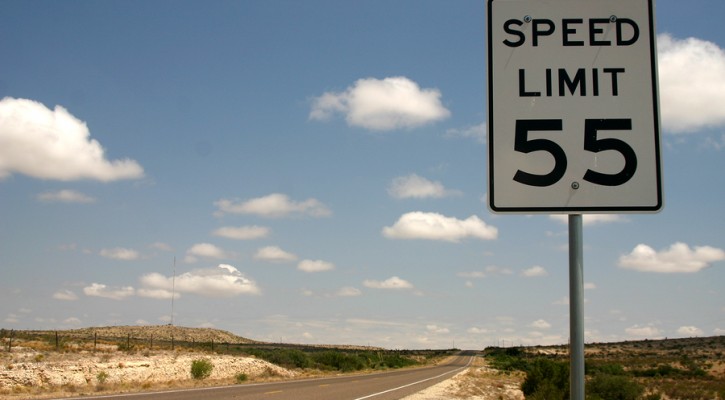
Role Reversal
April 22, 2014
We have talked about the importance of parents setting a good example for their teen drivers. Parents should avoid cell phone use, distractions, aggressive driving, and speeding, and of course, always buckle up.
However, equally important is the teen’s ability to recognize these bad driving habits. Rather than the parent critiquing the teen, teens should critique their parents while behind the wheel. This is a fun game, especially for teens. Parents can learn how it feels to be judged while driving, and teens can learn to recognize driving mistakes.
Distraction Checklist
April 21, 2014
Don’t become another teen statistic or adolescent cliche by driving while distracted. Car crashes are the leading cause of death for young people, and multi-tasking while behind the wheel is a big contributor to teen driver crashes. So, keep that compulsive behavior in check by reviewing this common list of driving distractions.
1. Music. Find your station, CD, or MP3 playlist before leaving the driveway and never take your eyes off the road for your audio-obsession. You can always change the station at a stoplight if necessary.
2. Friends. Having other people in the car drastically increases a teen’s crash risk. So, don’t let your friends become a distraction or force for peer pressure. Drive the same way you would with parents or a driving instructor.
3. Food. Eating in the car is never a good idea. In fact, fast food in general is pretty terrible. Save yourself the calories, acne, and stomach ache by eating real food at a real restaurant.
4. Phone. Just put that phone in the back seat and forget about it. Texting and talking on the phone are a serious distraction for people of all ages.

Cartalk: Engine Wear and Tear
April 15, 2014
Tom and Ray from Cartalk answer an important question for car owners everywhere. They cite Issac Newton, Daniel Bernoulli, Leanhard Euler, and Bridgestone to prove that driving at 75 mph is much more costly than driving at 55 mph. Not only does it decrease gas mileage by up to 40%, but it also decreases engine life and tire life. See the full story here:
http://www.cartalk.com/blogs/tom-ray/will-vs-wife-engine-wear-and-tear
How Much Does Each Mile Cost?
April 15, 2014
Whether you’re planning a road trip or deciding whether or not to give your friend a ride to the mall, it’s good to know exactly how much the drive will cost you. Let’s say the average car gets 24 miles per gallon, and the average price per gallon is $3.50. That’s about 14 cents per mile.
However, this price doesn’t show the whole picture. There are also costs related to engine wear, oil changes, tires, alignment and other maintenance costs, in addition to insurance, registration and inspections. So, how do we factor in all these expenses?
Luckily, the IRS has already done that for us. Each year, the Internal Revenue Service calculates the average value of one mile driven in the average car so that people who use their vehicle for work can know how much to deduct from their taxes. For 2014, the average cost-per-mile was estimated at 56 cents. So, a quick, say 10-mile drive to the mall and back would be $5.60. Meanwhile, a 200-mile road trip would be $112.
So, the next time you plan on driving somewhere, remember just how much that drive is really costing you.
Hands-Free is not Risk-Free
April 14, 2014
Learn why cell phone use is dangerous even if it’s on a hands-free device. The Teen Safe Driving blog has the full story here:
http://teensafedriving.org/blog/hands-free-is-not-risk-free/
Least Popular Cars of 2013
April 14, 2014
For one reason or another, some cars just aren’t popular. The “9 Automobiles Consumers Avoid Like the Plague” is a list that comes from wallstcheatsheet.com, and includes cars and SUV’s from some of America’s most loved brands. Some are ugly, some are simply victims of poor advertising, and they all had terrible sales this year. Dealers will most likely be itching to get them off the lots in 2014, so if you are looking to haggle a good price on a newer model car, then you may want to research the vehicles on this list of duds. See the full story here:
http://www.cheatsheet.com/automobiles/9-automobiles-consumers-avoid-like-the-plague.html
Lane Change Etiquette
April 14, 2014
If you want to change lanes in traffic, you need to know how to do it correctly. Official laws concerning lane changes can vary from state to state, but for the most part, police will readily pull over any driver that changes lanes in a dangerous manner. For this reason, it’s best to learn all the nuances of lane-changing etiquette.
Never change lanes in a blind spot. This is especially important when changing lanes next to larger trucks and 18-wheelers. Instead, try to change lanes before you hit their blind spot, or continue in your own lane until you pass their blind spot. Remember, if you can’t see their mirrors then they can’t see you.
Always check your blind spot. After checking your mirrors and making sure your vehicle is a safe distance from those ahead of you, take a quick glance over your shoulder to check your blind spot before changing lanes.
Use your blinkers. They are there to warn other drivers of the direction you intend to go. Police are always on the lookout for drivers weaving between lanes without blinkers, making the highways more dangerous for everyone around.
Don’t tailgate. There is no reason to tailgate a vehicle before switching lanes to pass them. It’s not smart, it’s certainly not safe, and you can actually get ticketed for it. If you notice that the driver ahead of you is moving at a slower pace, then prepare to switch lanes before you are riding their bumper.
Don’t cutoff other vehicles. This is an offense that puts people’s lives in danger, and if an officer sees you cutting off another driver they will ticket you for either a) reckless driving, b) unsafe lane change, or c) aggressive driving. These can be serious offenses, which result in a greater number of marks on your record and higher insurance rates.
Don’t linger in the fast lane after passing a vehicle. If you have changed lanes to pass another vehicle, then move back over after you can see both of their headlights in your rearview mirror. This allows other vehicles to use the fast lane for passing, aiding in traffic flow and making the highway safer for all drivers. Plus, many states have made it illegal to obstruct traffic by cruising in the left lane.
Following these rules of the road will not only make you a safer driver, but also a smarter and more courteous driver, which makes the roads safer and more pleasant for everyone involved.
Most Dangerous Roads in America
April 13, 2014
Before you head out on the road this summer, it couldn’t hurt to read this article on the 10 most dangerous roads in America. Just because you’re avoiding the urban areas for more scenic rural routes doesn’t necessarily mean you’re home free. See the full story here:
http://www.popularmechanics.com/cars/news/10-of-americas-most-dangerous-roads#slide-1
10 Things You Don’t Know About Teen Drivers
April 13, 2014
There are a lot of risks to face out there on the open road, especially as a new driver. However, knowing a few facts and numbers can help both parents and teens to be more cautious and make safer decisions behind the wheel. Here are 10 things you probably did not know about teen drivers:
1. The first twelve months of driving are the most dangerous time in a teenager’s life.
2. Even after the first year, and after teens turn into 20-somethings, the risk of a crash remains extremely high. For this reason, the road can remain a dangerous place, and auto insurance rates will remain high as well. In fact, the risk of being a young driver doesn’t significantly decrease until the age of 25.
3. Teens don’t always take more risks than other drivers. In fact, the most common reason for teen crashes is inexperience rather than risky behavior.
4. Teen drivers are 3X more likely to crash than experienced drivers.
5. Three or more passengers increase a teen drivers crash risk by 4X.
6. Most fatal nighttime crashes happen before midnight.
7. More than 50% of teens killed in car crashes were not wearing a seatbelt.
8. Most states have inadequate teen driving laws and restrictions to protect teens from common crash risks.
9. Teens get their driving habits from their parents.
10. Among other gender differences, teen boys are 3X more likely to drive aggressively when there’s a girl in the car.
Signs of a Bad Mechanic
April 13, 2014
We all need a trustworthy mechanic to work on our vehicles. However, the task of hunting down a good mechanic can be daunting. Begin by reviewing the 4 warning signs of a bad auto mechanic, courtesy of Angie’s List:
http://www.angieslist.com/articles/4-warning-signs-bad-auto-mechanic.htm
